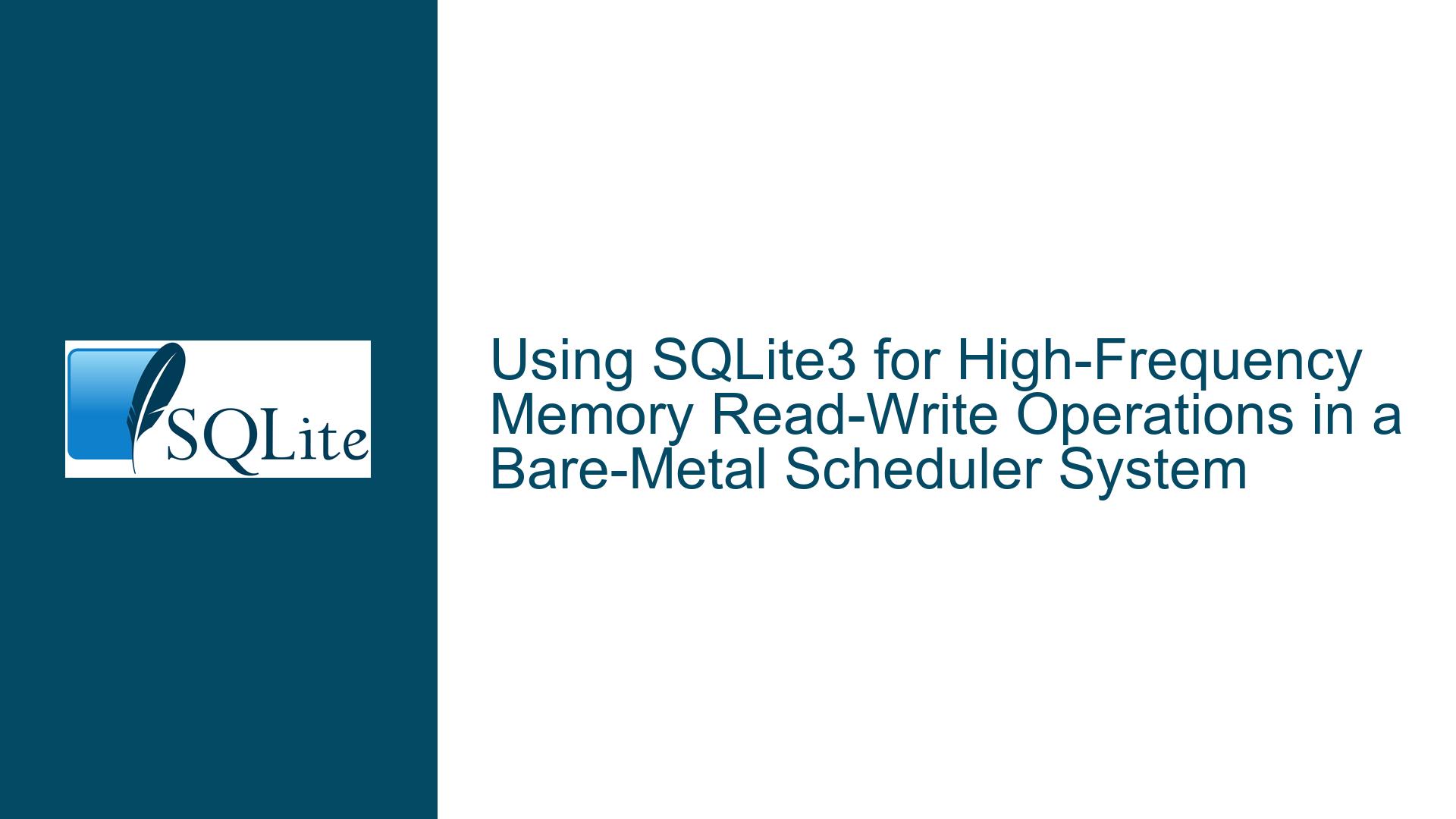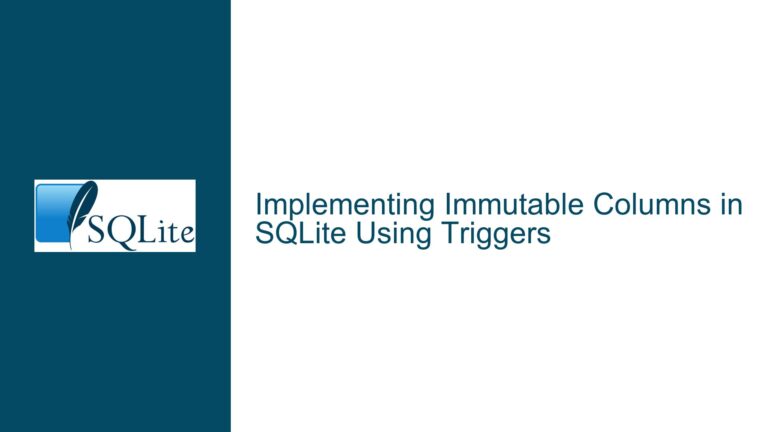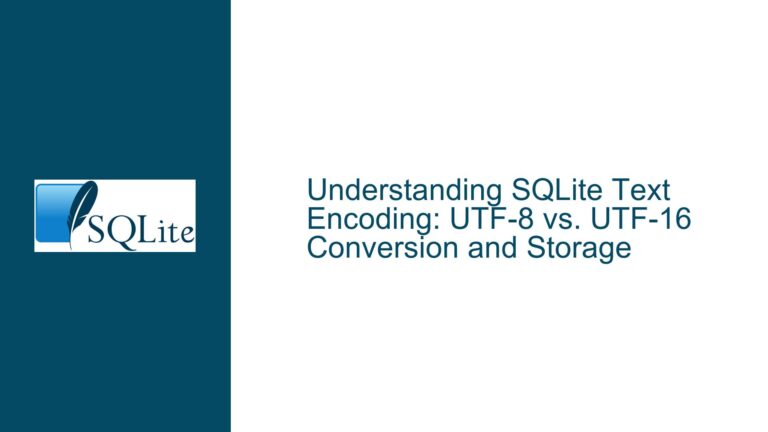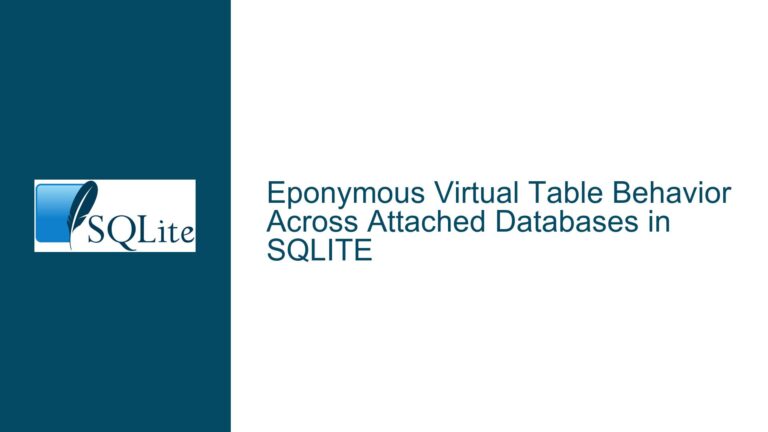Using SQLite3 for High-Frequency Memory Read-Write Operations in a Bare-Metal Scheduler System
SQLite3 in High-Frequency Memory Read-Write Scenarios
SQLite3 is a lightweight, serverless, and self-contained SQL database engine that is widely used in embedded systems, mobile applications, and scenarios where simplicity and low resource consumption are critical. However, when considering its use in a bare-metal scheduler system with high-frequency memory read-write operations, several factors must be evaluated to determine its suitability. SQLite3 is designed to handle moderate read-write operations efficiently, but its performance and reliability in high-frequency, memory-intensive environments depend on how it is configured and integrated into the system.
In a bare-metal scheduler system, the application runs directly on the hardware without an operating system, which means that all resource management, including memory and I/O operations, must be handled by the application itself. This environment poses unique challenges for SQLite3, particularly in terms of memory management, transaction handling, and data integrity. SQLite3 relies on the underlying operating system for certain functionalities, such as file system operations and memory allocation. In a bare-metal environment, these functionalities must be implemented or emulated, which can introduce complexity and potential performance bottlenecks.
The primary concern in this scenario is whether SQLite3 can handle the high-frequency read-write operations without significant performance degradation or data corruption. SQLite3 uses a disk-based storage model, which means that all data is eventually written to disk, even if it is temporarily cached in memory. This design can lead to performance issues in a high-frequency read-write environment, as the disk I/O operations can become a bottleneck. Additionally, SQLite3’s locking mechanism, which ensures data consistency during concurrent access, may not be optimized for bare-metal systems where the absence of an operating system can complicate concurrency management.
Another consideration is the memory footprint of SQLite3. While SQLite3 is known for its small size and low resource consumption, its memory usage can grow significantly in a high-frequency read-write environment, especially if large datasets are involved. In a bare-metal system, where memory resources are limited, this can be a critical issue. The system must be designed to manage memory efficiently, ensuring that SQLite3 does not exhaust available memory or cause memory fragmentation.
In summary, while SQLite3 can be used in a bare-metal scheduler system with high-frequency memory read-write operations, its performance and reliability depend on careful configuration and integration. The system must address potential issues related to disk I/O, concurrency management, and memory usage to ensure that SQLite3 operates efficiently in this environment.
Challenges of High-Frequency Read-Write Operations in SQLite3
High-frequency read-write operations in SQLite3 can lead to several challenges that may impact the performance and reliability of the system. One of the primary challenges is the potential for disk I/O bottlenecks. SQLite3 is designed to write data to disk to ensure durability, but in a high-frequency read-write environment, the constant disk I/O operations can become a significant performance bottleneck. This is especially true in a bare-metal system, where the absence of an operating system means that the application must handle all I/O operations directly, potentially leading to inefficiencies.
Another challenge is the management of concurrent access to the database. SQLite3 uses a file-based locking mechanism to ensure data consistency during concurrent read and write operations. However, in a high-frequency read-write environment, the locking mechanism can become a source of contention, leading to delays and reduced throughput. In a bare-metal system, where the absence of an operating system complicates concurrency management, this issue can be exacerbated. The system must be designed to minimize contention and ensure that concurrent access is managed efficiently.
Memory management is also a critical challenge in a high-frequency read-write environment. SQLite3 uses memory to cache data and optimize query performance, but in a high-frequency read-write environment, the memory usage can grow significantly. This can be particularly problematic in a bare-metal system, where memory resources are limited. The system must be designed to manage memory efficiently, ensuring that SQLite3 does not exhaust available memory or cause memory fragmentation. This may involve implementing custom memory management strategies or optimizing SQLite3’s memory usage through configuration settings.
Data integrity is another concern in a high-frequency read-write environment. SQLite3 is designed to ensure data integrity through its transaction mechanism, but in a high-frequency read-write environment, the risk of data corruption increases. This is especially true in a bare-metal system, where the absence of an operating system means that the application must handle all aspects of data integrity, including error recovery and crash resilience. The system must be designed to ensure that data integrity is maintained even in the face of high-frequency read-write operations and potential system failures.
In summary, high-frequency read-write operations in SQLite3 can lead to several challenges, including disk I/O bottlenecks, concurrency management issues, memory management concerns, and data integrity risks. These challenges must be carefully addressed to ensure that SQLite3 performs reliably and efficiently in a bare-metal scheduler system.
Optimizing SQLite3 for Bare-Metal Scheduler Systems
To optimize SQLite3 for use in a bare-metal scheduler system with high-frequency memory read-write operations, several strategies can be employed. These strategies focus on minimizing disk I/O, managing concurrency, optimizing memory usage, and ensuring data integrity.
One of the most effective ways to minimize disk I/O is to use SQLite3’s in-memory database feature. An in-memory database stores all data in RAM, eliminating the need for disk I/O operations. This can significantly improve performance in a high-frequency read-write environment. However, it is important to note that an in-memory database is volatile, meaning that data will be lost if the system crashes or loses power. To mitigate this risk, the system can be designed to periodically write the in-memory database to disk or use a combination of in-memory and disk-based storage.
Another strategy for minimizing disk I/O is to optimize SQLite3’s write-ahead logging (WAL) mode. WAL mode is a journaling mode that allows multiple readers and a single writer to access the database simultaneously, reducing contention and improving performance. In a high-frequency read-write environment, WAL mode can be particularly beneficial. However, WAL mode requires careful configuration to ensure that it operates efficiently in a bare-metal system. This may involve adjusting the WAL checkpointing interval, optimizing the WAL file size, and ensuring that the system has sufficient memory to support WAL mode.
Managing concurrency in a bare-metal system requires careful design to minimize contention and ensure efficient access to the database. One approach is to use SQLite3’s shared cache mode, which allows multiple connections to share a single cache, reducing memory usage and improving performance. However, shared cache mode can introduce complexity, particularly in a bare-metal system where the absence of an operating system complicates concurrency management. The system must be designed to ensure that shared cache mode is used efficiently and that contention is minimized.
Optimizing memory usage in a bare-metal system involves configuring SQLite3 to use memory efficiently and implementing custom memory management strategies if necessary. SQLite3 provides several configuration options for managing memory usage, including the ability to set limits on the amount of memory used for caching and query execution. In a bare-metal system, these options should be carefully tuned to ensure that SQLite3 does not exhaust available memory or cause memory fragmentation. Additionally, custom memory management strategies, such as using a custom memory allocator or implementing memory pooling, can be employed to optimize memory usage further.
Ensuring data integrity in a high-frequency read-write environment requires implementing robust error recovery and crash resilience mechanisms. SQLite3 provides several features for ensuring data integrity, including atomic transactions, journaling, and checksumming. In a bare-metal system, these features must be carefully configured and supplemented with custom error recovery and crash resilience mechanisms. This may involve implementing custom journaling and checkpointing strategies, using redundant storage, and ensuring that the system can recover gracefully from crashes and power failures.
In summary, optimizing SQLite3 for use in a bare-metal scheduler system with high-frequency memory read-write operations involves minimizing disk I/O, managing concurrency, optimizing memory usage, and ensuring data integrity. These strategies require careful configuration and design to ensure that SQLite3 performs reliably and efficiently in this challenging environment.
| Strategy | Description | Considerations |
|---|---|---|
| In-Memory Database | Stores all data in RAM, eliminating disk I/O | Data is volatile; periodic disk writes or hybrid storage may be needed |
| Write-Ahead Logging (WAL) Mode | Allows multiple readers and a single writer, reducing contention | Requires careful configuration; sufficient memory is needed |
| Shared Cache Mode | Multiple connections share a single cache, reducing memory usage | Introduces complexity; contention must be minimized |
| Memory Configuration | Set limits on memory used for caching and query execution | Must be tuned to avoid exhausting memory or causing fragmentation |
| Custom Memory Management | Implement custom memory allocator or memory pooling | Requires additional development effort |
| Data Integrity Mechanisms | Use atomic transactions, journaling, checksumming, and custom recovery | Must be robust to handle crashes and power failures |
By carefully implementing these strategies, SQLite3 can be optimized for use in a bare-metal scheduler system with high-frequency memory read-write operations, ensuring that it performs reliably and efficiently in this challenging environment.






